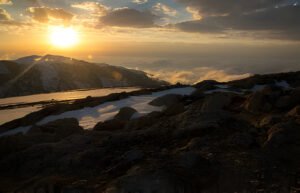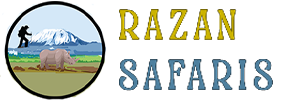Kilimanjaro 7-Day Lemosho Route – 2025 Classic Scenic Climb Guide : Table of Contents
Why Choose the Lemosho Route?
The Kilimanjaro 7-Day Lemosho Route is widely regarded as one of the most scenic and successful ways to reach the summit of Africa’s tallest mountain. It starts on the western side of Kilimanjaro, offering lush rainforest trails, panoramic views, and a quieter path compared to the more crowded Marangu or Machame routes.
🟢 Ideal for climbers seeking a moderate challenge, incredible scenery, and higher summit success rates.
Kilimanjaro 7-Day Lemosho Route Itinerary – Day by Day
Day 1: Londorossi Gate to Mti Mkubwa Camp
-
Altitude: 2,100m to 2,650m
-
Time: ~3–4 hours
-
Hike through thick rainforest filled with monkeys and exotic birds.
Day 2: Mti Mkubwa to Shira 1 Camp
-
Altitude: 2,650m to 3,610m
-
Time: ~5–6 hours
-
Pass through moorland and enter the vast Shira Plateau.
Day 3: Shira 1 to Shira 2 Camp
-
Altitude: 3,610m to 3,850m
-
Time: ~4–5 hours
-
Easy acclimatization day; enjoy panoramic views.
Day 4: Shira 2 to Barranco Camp via Lava Tower
-
Altitude: 3,850m to 4,630m (up) then down to 3,976m
-
Time: ~6–7 hours
-
Vital acclimatization; experience a taste of high altitude.
Day 5: Barranco to Karanga Camp
-
Altitude: 3,976m to 3,995m
-
Time: ~4–5 hours
-
Climb the Barranco Wall – a thrilling but safe scramble.
Day 6: Karanga to Barafu Camp
-
Altitude: 3,995m to 4,673m
-
Time: ~3–4 hours
-
Final preparation for your summit attempt.
Day 7: Summit to Uhuru Peak, then down to Mweka Camp
-
Altitude: 4,673m to 5,895m (then down to 3,110m)
-
Time: ~12–14 hours
-
Midnight summit push; reach Uhuru Peak at sunrise!
Altitude Profile & Acclimatization
The 7-day version of the Kilimanjaro Lemosho Route allows for better acclimatization compared to shorter climbs. With a “climb high, sleep low” strategy and an extra acclimatization day at Shira 2, your body adjusts gradually to higher altitudes — boosting summit success rates.
✅ Recommended for beginners with average fitness level.
How Difficult Is the Lemosho Route?
While not technical, this route requires endurance. You’ll be trekking 5–8 hours daily, with the summit night lasting up to 14 hours.
Key challenges:
-
Steep terrain (Barranco Wall)
-
Cold temperatures above 4,000m
-
Altitude-related fatigue
💪 Training with hiking, cardio, and altitude simulation (if possible) is advised.
Best Time to Climb in 2025
The most favorable seasons for the Kilimanjaro 7-Day Lemosho Route are:
-
January to early March – dry, less crowded
-
June to October – prime season, clear skies, busiest months
Avoid April–May and November due to heavy rains.
Packing Tips for the Lemosho Route
You’ll need to be ready for hot, cold, dry, and wet conditions. Essentials include:
-
Waterproof hiking boots
-
4-season sleeping bag
-
Insulated jacket & base layers
-
Trekking poles
-
Daypack (30–40L)
-
Headlamp with spare batteries
-
High SPF sunscreen & lip balm
-
Reusable water bottles or bladder system
🎒 Use soft duffel bags (max 15kg) for porter carry.
Final Thoughts
Climbing the Kilimanjaro 7-Day Lemosho Route in 2025 is a rewarding and life-changing adventure. With its high success rate, dramatic landscapes, and fewer crowds, this route is the ultimate way to reach Uhuru Peak with confidence.
Start preparing now and join thousands of climbers who’ll stand on the Roof of Africa next year.







With thanks. Loads of erudition! http://pokemonforever.com/User-Lptyra
I drop a leave a response each timje I appreciate a post on a site or if I have spmething to valuable to contribute to the discussion. Usually it is
triggered by the fire communicated in the post I read.
And after this post Kilimanjaro 7-Day Lemosho Route – 2025
ultiumate Scenic. I was actually movedd enough to post a leave a responsea response :
) I do have a couple of questions for you if it’s allright.
Could it be only me or ddo some of these comments come
across like they are left by brain dead folks?
😛 And, if you are posting on other places, I’d like to folloow you.
Could you list alll of all your shared sites like your linkedin profile, Facebook page
orr twitter feed? https://Glassi-freespins.blogspot.com/2025/08/how-to-claim-glassi-casino-free-spins.html
purchase orlistat for sale – site buy generic orlistat 60mg
buy dapagliflozin – purchase forxiga without prescription forxiga for sale online
The thoroughness in this section is noteworthy. http://furiouslyeclectic.com/forum/member.php?action=profile&uid=24632
With thanks. Loads of erudition!
buy maxolon online
More articles like this would pretence of the blogosphere richer. https://ondactone.com/simvastatin/
This is the kind of scribble literary works I in fact appreciate. https://aranitidine.com/fr/en_france_xenical/
I couldn’t resist commenting. Profoundly written! https://prohnrg.com/product/cytotec-online/
This is the kind of topic I take advantage of reading. https://ursxdol.com/sildenafil-50-mg-in/
Palatable blog you possess here.. It’s intricate to on strong worth belles-lettres like yours these days. I truly recognize individuals like you! Take care!! online
This is the type of enter I find helpful. amoxil for sale
can you buy viagra boots – https://strongvpls.com/# sildenafil 50mg coupon
order ranitidine 300mg without prescription – https://aranitidine.com/# cost zantac 300mg
cialis for daily use cost – https://strongtadafl.com/# mambo 36 tadalafil 20 mg
best research tadalafil 2017 – https://ciltadgn.com/ where to buy cialis over the counter
order cenforce 100mg sale – https://cenforcers.com/# cenforce 50mg pill
escitalopram drug – https://escitapro.com/# buy escitalopram without a prescription
buy fluconazole 100mg for sale – buy forcan paypal diflucan 100mg brand
where can i buy amoxil – https://combamoxi.com/ order amoxicillin generic